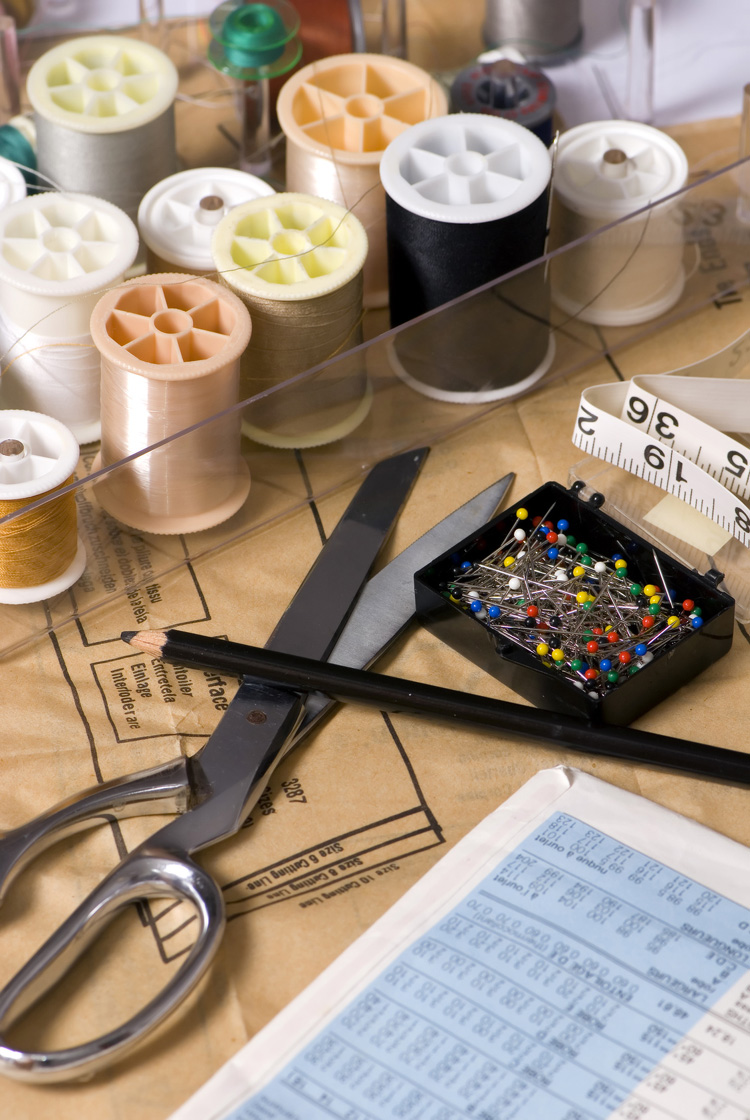Sewing - Picking the Correct Pattern Size
/I have been asked a lot recently to teach classes in sewing (usually whenever someone finds out that most of my clothing is hand sewn, rather than store bought). I would love to be able to do just that, but I simply don’t have the time. Most of my sewing is done at night, or during spare moments on the weekends. I have no idea how I could squeeze a class into the mix, but I decided to try anyway – at least in bit and pieces. I have decided to create several online tutorials at my leisure (Ha!), starting with the basics, and working toward a perfectly fitted pattern.

Choosing the appropriate pattern size
If you buy clothes off the rack, it is relatively easy to find the best size, you just try on all of the sizes that might fit, and pick the best one. When you are sewing your clothes, it is a bit more difficult to find the correct size; after all, you can’t try the pattern on before you sew it. On the other hand, sewing your own clothes can give you a perfect fit, rather than the fit that is just close enough. The problem is; which pattern size should you choose?
Ready to wear clothing, and most sewing patterns are made based on an average, ideal person. She is a size 8, about 20 years old, 5’6” (1.67 meters), and a B cup. As I am sure you know, very few people fit this “average.” Most of us are shorter, or taller, younger or older, larger or smaller, or several different sizes. So which size should you pick?
Here is the rule of thumb;
Pants – Measure at your widest point below your waist, and above your legs, and choose the pattern size with the corresponding hip size. If you are between sizes, choose the smaller size (Unless the style of the garment is very closely fitted. Most styles have enough ease, or extra room, to fit people who are between sizes; however, very closely fitted garments have minimal ease).
- Why? It is relatively easy to adjust the width of the waist, and legs of pants, but the curve at the seat of the pants is a bit tricky to adjust. Picking the full hip measurement usually allows for the easiest adjustment.
Skirts –
- A-line, and other styles that are closely fitted at the waist, and then rapidly increase in size skimming the hips, should be chosen based on the waist measurement.
- Why? Since the waist is the only part of this style that is closely fitted, picking the size that fits the waist allows for the least pattern modification.
- Straight skirts and other styles that are fitted through the waist and hips should be chosen based on the hip measurement. Chose the pattern size in which the hip size corresponds to the measure of your widest point below your waist (this measurement may be at your hips or thighs).
- Why? The waist in this type of skirt usually has easily adjustable darts at the waistline.
Blouses and Dresses – Measure your full bust, and your upper bust (wrap the tape measure around your chest under your arms, but above your breasts). Now subtract the upper bust measurement from the full bust measurement.
- If the difference is 2 inches (5 cm) or less (you are likely an A or B cup) choose the pattern size with the bust measurement corresponding to your full bust measurement. Congrats, you probably don’t have major bust revisions ahead, since most patterns are designed for b up breasts!
- If the difference is greater than 2 inches (you are likely a C cup or larger), chose the pattern size with the bust measurement corresponding to your full bust measurement.
- Why? While the bust adjustment isn’t easy, it isn’t nearly as complicated as sizing down shoulders that are too big. If you were to pick the size corresponding to your full bust measurement, the bust would fit, but the shoulders (and often everything else) would be too large
I am currently working on a dress for myself, and I have been focusing on the fitting issues inherent in dresses recently. Since they are on my mind, I will likely post next about bust adjustments. Till then, find a simple dress or bodice pattern, and find your size. I am working on the Truffle dress, by Colette Patterns from their new book, “The Colette Sewing Handbook”. It is a wonderful pattern for perfecting fit, and I highly recommend it.









